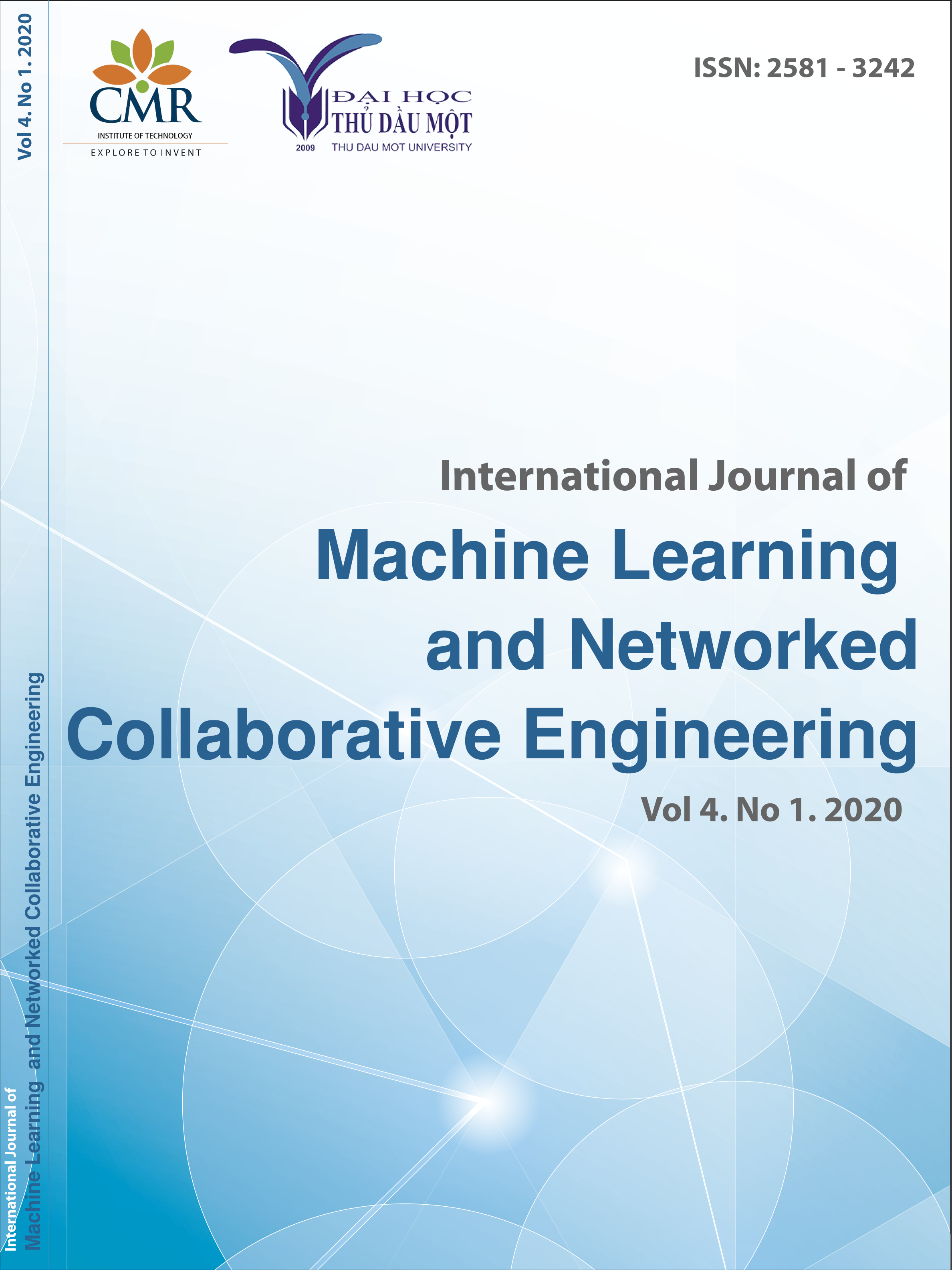Revealing Brain Tumor Using Cross-Validated NGBoost Classifier
NG Boost Classifier
Keywords:
Brain Tumor, 5-fold Cross-Validation, NGBoost, Ensemble Technique, Patient.Abstract
Brain is the most complicated and delicate anatomical structure in human body. Statistics proves that, among various brain ailments, brain tumor is most fatal and in many cases they become carcinogenic. Brain tumor is characterized by abnormal and uncontrolled growth of brain cells, and takes up space within the cranial cavity and varies in shape, size, position and characteristics viz., can be benign or malignant, which makes the detection of brain tumor very critical and challenging. The vital information a neurologist or neurosurgeon needs to have is the precise size and location of tumor in the brain and whether it is causing any swelling or compression of the brain that may need urgent attention. This paper exploits ensemble strategy based Machine Learning (ML) algorithms for reveling brain tumors. NGBoost algorithm along with 5-fold stratified cross-validation scheme is proposed as classifier model that automatically detects patients with brain tumors. The proposed method is implemented with necessary fine-tuning of parameters which is compared against ensemble based baseline classifiers such as AdaBoost, Gradient Boost, Random Forest and Extra Trees Classifier. Experimental study implies that proposed method outperforms baseline models with significantly improved efficiency. The interfering features those have impact on brain tumor classification are ranked and this ranking is retrieved from the best classifier model.
References
W. B. Pope and M. W. Itagaki, “Characterizing Brain Tumor Research: The Role of the National Institutes of Health SUMMARY,” pp. 605–609, 2010, doi: 10.3174/ajnr.A1904.
R. Maclin, “Popular Ensemble Methods?: An Empirical Study,” vol. 11, no. July, pp. 169–198, 2016, doi: 10.1613/jair.614.
T. Duan et al., “NGBoost: Natural Gradient Boosting for Probabilistic Prediction,” 2019. arXiv:1910.03225, doi:10.1007/978-3-642-41136-6_5Corpus ID: 7122892.
R. E. Schapire, “Explaining adaboost,” Empir. Inference Festschrift Honor Vladimir N. Vapnik, pp. 37–52, 2013, doi: 10.1007/978-3-642-41136-6_5.
A. Natekin and A. Knoll, “Gradient boosting machines, a tutorial,” Front. Neurorobot., vol. 7, no. DEC, 2013, doi: 10.3389/fnbot.2013.00021.
L. Breiman, “Random Forests,” Mach. Learn., vol. 45, no. 1, pp. 5–32, 2001, doi: 10.1017/CBO9781107415324.004.
P. Geurts, D. Ernst, and L. Wehenkel, “Extremely Randomized Trees Extremely randomized trees,” no. January 2014, 2006, doi: 10.1007/s10994-006-6226-1.
J. N. Rich et al., “Statement brain tumours,” Nat. Rev. Clin. Oncol., vol. 16, no. August, 2019, doi: 10.1038/s41571-019-0177-5.
X. Zhang, L. Yao, X. Wang, J. Monaghan, D. Mcalpine, and Y. U. Zhang, “A Survey on Deep Learning based Brain-Computer Interface: Recent Advances and New Frontiers,” vol. 1, no. 1, 2018, doi: 10.1145/1122445.1122456.
J. Amin, M. Sharif, M. Yasmin, and S. L. Fernandes, “Big data analysis for brain tumor detection?: Deep convolutional neural networks,” Futur. Gener. Comput. Syst., 2018, doi: 10.1016/j.future.2018.04.065.
J. Juan-albarracín, E. Fuster-garcia, and J. V Manjón, “Automated Glioblastoma Segmentation Based on a Multiparametric Structured Unsupervised Classification,” pp. 1–20, 2015, doi: 10.1371/journal.pone.0125143.
M. Soltaninejad et al., “Automated brain tumour detection and segmentation using superpixel-based extremely randomized trees in FLAIR MRI,” 2016, doi: 10.1007/s11548-016-1483-3.
V. V. Priya, “An Efficient Segmentation Approach for Brain Tumor Detection in MRI,” vol. 9, no. May, 2016, doi: 10.17485/ijst/2016/v9i19/90440.
D. N. Louis et al., “The 2016 World Health Organization Classification of Tumors of the Central Nervous System?: a summary,” ActaNeuropathol., vol. 131, no. 6, pp. 803–820, 2016, doi: 10.1007/s00401-016-1545-1.
P. Afshar, K. N. Plataniotis, and A. Mohammadi, “CAPSULE NETWORKS FOR BRAIN TUMOR CLASSIFICATION BASED ON MRI IMAGES AND COARSE TUMOR BOUNDARIES,” pp. 1368–1372, 2019. arXiv:1811.00597,DOI: 10.1109/ICASSP.2019.8683759, doi:10.1007/978-3-642-41136-6_5Corpus ID: 7122892
J. Amin, M. Sharif, M. Raza, and M. Yasmin, “Detection of Brain Tumor based on Features Fusion and Machine Learning,” J. Ambient Intell. Humaniz. Comput. 2018, doi: 10.1007/s12652-018-1092-9.
K. Usman and K. Rajpoot, “Brain tumor classification from multi-modality MRI using wavelets and machine learning,” Pattern Anal. Appl., 2017, doi: 10.1007/s10044-017-0597-8.
P. Mlynarski, A. Criminisi, and N. Ayache, “Deep Learning with Mixed Supervision for Brain Tumor,” pp. 1–23. 10.1117/1.JMI.6.3.034002, DOI:10.1117/1.JMI.6.3.034002
S. Vijh, S. Sharma, and P. Gaurav, "Brain Tumor Segmentation Using OTSU Embedded Adaptive Particle Swarm Optimization Method and Convolutional Neural Network." Springer International Publishing. doi.org/10.1007/978-3-030-25797-2_8
H. Mohsen, E. A. El-dahshan, E. M. El-horbaty, and A. M. Salem, “Classification using deep learning neural networks for brain tumors,” Futur. Comput. Informatics J., vol. 3, no. 1, pp. 68–71, 2018, doi: 10.1016/j.fcij.2017.12.001.
A. Veeraraghavan, S. Member, and A. K. Roy-chowdhury, “Matching Shape Sequences in Video with Applications in Human Movement Analysis,” no. January, 2006, doi: 10.1109/TPAMI.2005.246.
G. Litjens et al., “A Survey on Deep Learning in Medical Image Analysis,” no. 1995, 1998. 10.1016/j.media.2017.07.005, doi:10.1016/j.media.2017.07.005.
Z. Akkus, A. Galimzianova, A. Hoogi, D. L. Rubin, and B. J. Erickson, “Deep Learning for Brain MRI Segmentation?: State of the Art and Future Directions,” pp. 449–459, 2017, doi: 10.1007/s10278-017-9983-4.
J. Cheng et al., “Enhanced Performance of Brain Tumor Classification via Tumor Region Augmentation and Partition Enhanced Performance of Brain Tumor Classification via Tumor Region Augmentation and Partition,” no. October, 2015, doi: 10.1371/journal.pone.0140381.
R. H. Kirschen, E. A. O’Higgins, and R. T. Lee, “A Study of Cross-Validation and Bootstrap for Accuracy Estimation and Model Selection,” Am. J. Orthod. Dentofac. Orthop., vol. 118, no. 4, pp. 456–461, 2000, doi: 10.1067/mod.2000.109032.
JakeshBohaju, “Brain Tumor.” Kaggle, doi: 10.34740/KAGGLE/DSV/955413.
H. M and S. M.N, “A Review on Evaluation Metrics for Data Classification Evaluations,” Int. J. Data Min. Knowl. Manag. Process, vol. 5, no. 2, pp. 01–11, 2015, doi: 10.5121/ijdkp.2015.5201.
S. M. Vieira, U. Kaymak, and J. M. C. Sousa, “Cohen’s kappa coeffcient as a performance measure for feature selection,” 2010 IEEE World Congr. Comput. Intell. WCCI 2010, no. May 2016, 2010, doi:10.1109/FUZZY.2010.5584447.
Pedregosa et al," Scikit-learn: Machine Learning in Python",JMLR 12, pp. 2825-2830, 2011.
B. H. Menze et al., "The Multimodal Brain Tumor Image Segmentation Benchmark (BRATS)," in IEEE Transactions on Medical Imaging, vol. 34, no. 10, pp. 1993-2024, Oct. 2015, doi: 10.1109/TMI.2014.2377694.
Downloads
Published
How to Cite
Issue
Section
License
Copyright (c) 2020 International Journal of Machine Learning and Networked Collaborative Engineering

This work is licensed under a Creative Commons Attribution-NonCommercial-NoDerivatives 4.0 International License.
https://creativecommons.org/licenses/by/4.0/legalcode




